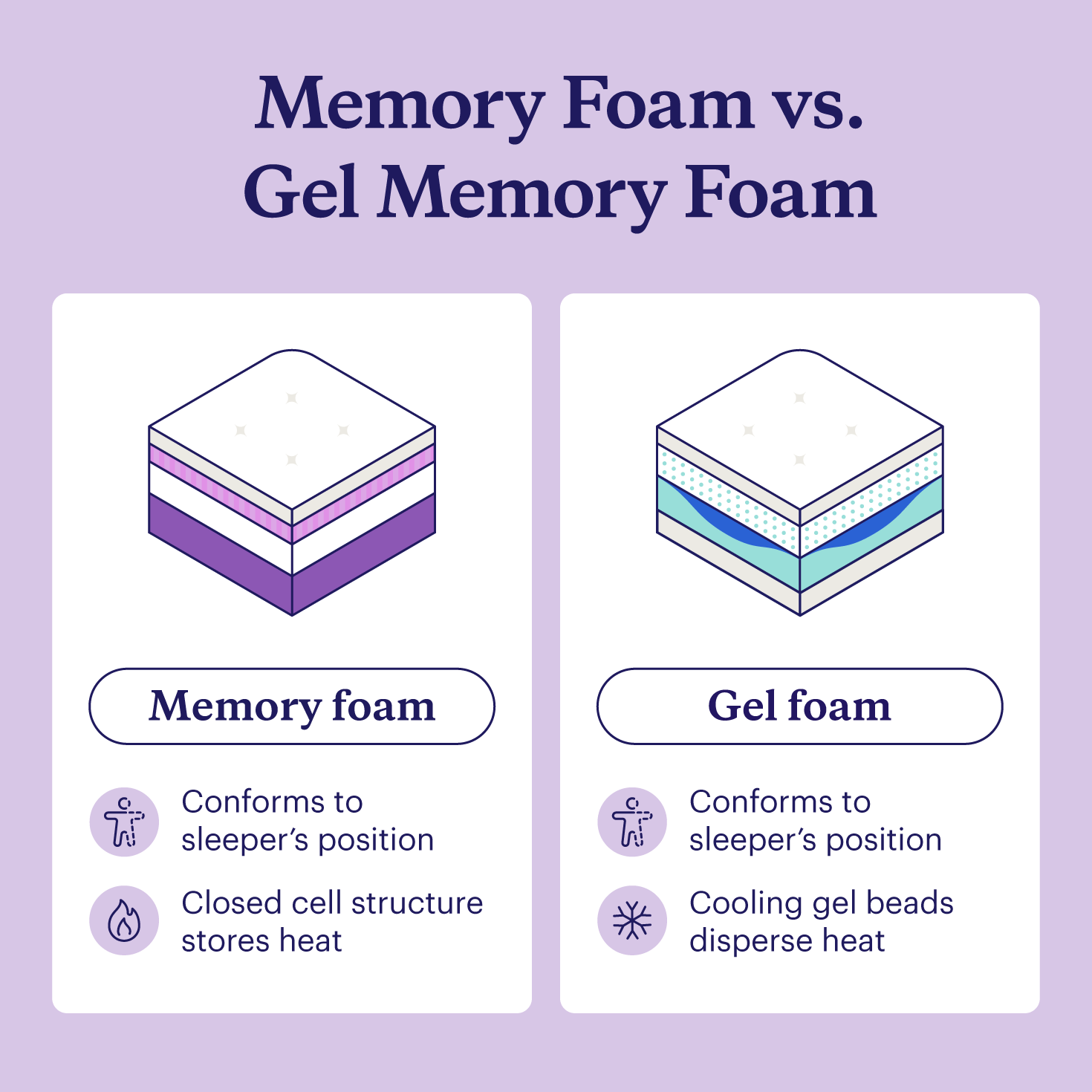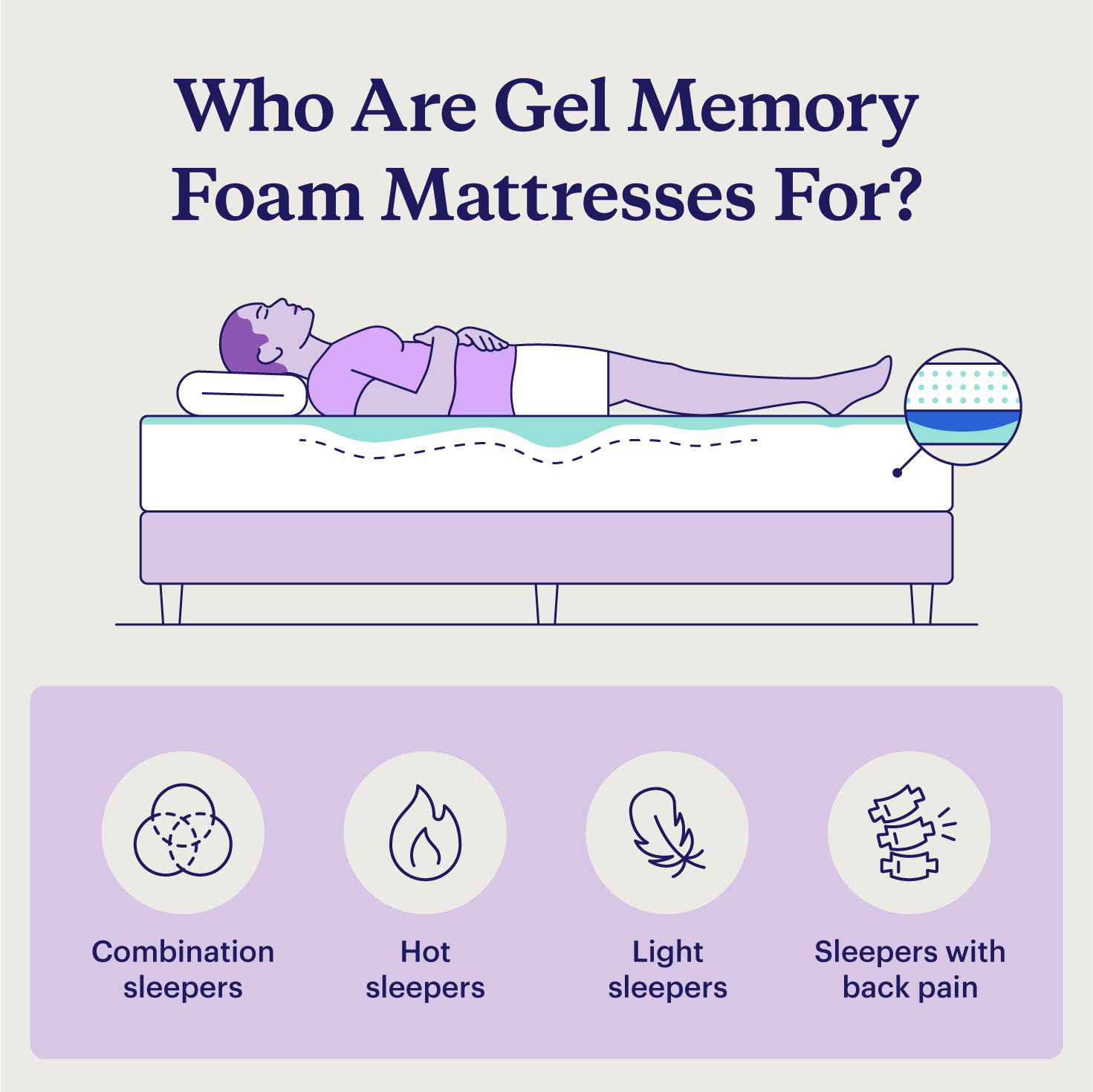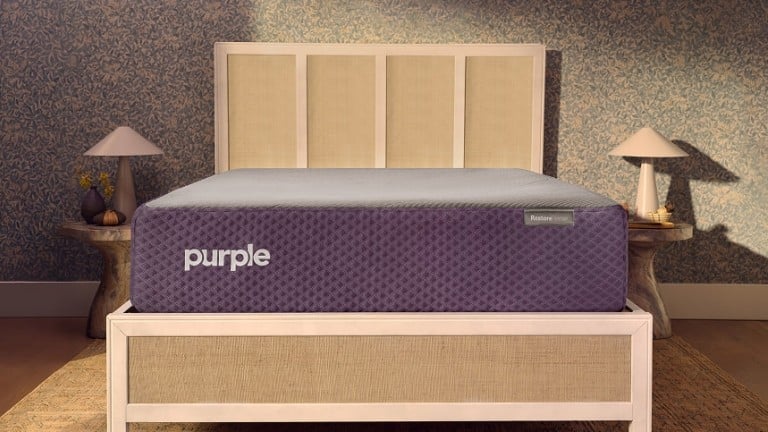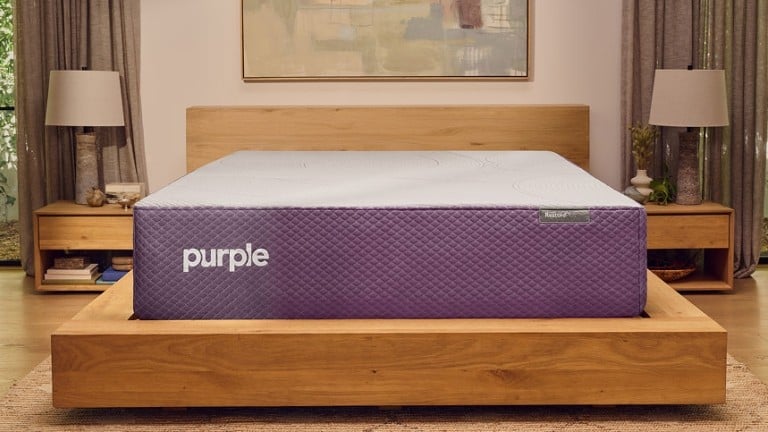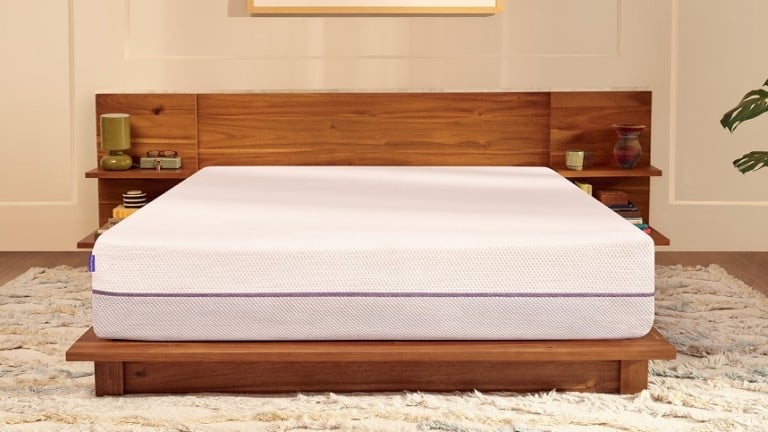Memory Foam vs. Gel Memory Foam: Are Gel Foam Beds More Cooling?
Key Takeaways
- Memory foam is a synthetic bedding material that conforms to a sleeper's body, providing support and relieving pressure.
- Gel memory foam mattresses are infused with a cooling gel meant to regulate your body temperature.
- The key difference between gel foam vs. memory foam is their ability to regulate heat.
Imagine waking up in the middle of the night hot, sticky, and unable to find a comfortable sleep position. A mattress retaining body heat, causing this issue. If this is a common occurrence it might be time for a new mattress.
If you are considering different types of mattresses, differentiating between memory foam vs. gel memory foam mattresses can be confusing. While both offer similar benefits, they handle heat management differently.
Learning about both mattress types will help you make an informed decision for your sleep needs. Keep reading to learn more and find the right mattress fit.
What Is Memory Foam?
Made of a synthetic material and used in pillows and mattresses, memory foam provides support and relieves pressure while you sleep. It was developed in the 1970s by Charles Yost for NASA to use in airplane seats.
Memory foam is known for its ability to conform to the body's shape and spring back once pressure is removed. It comes in different firmness levels.
Side sleepers and individuals with back pain particularly benefit from the pressure-relieving properties.
What Is Gel Memory Foam?
Gel memory foam is a newer memory foam infused with cooling gel beads containing phase-changing materials that reduce heat retention by dispersing body heat throughout the mattress.
Cool gel memory foam mattresses are great options for individuals who overheat and want the supportive, pressure-relieving benefits of memory foam.
Gel-infused mattresses, or “third-generation foam,” were first invented in 2006 by Charles Yost. Before this mattress technology came along, foam mattresses only had synthetic or plant-based options.
Gel-infused mattresses didn’t become popular until 2011, when Serta produced the iComfort mattress line.
Key Differences Between Memory Foam and Gel Memory Foam
The biggest difference between memory foam and gel memory foam is how the materials regulate heat. Memory foam has a closed-cell structure that traps heat, while gel memory foam is known for an open-cell structure that can increase airflow and breathability.
Another difference is gel memory foam typically costs more, increasing how much you spend on a mattress. Otherwise, both materials provide many similar benefits.
Take a look at the chart below to get a better idea of their similarities and differences:
Memory Foam | Gel Memory Foam | |
Pressure relieving | ✔️ | ✔️ |
Body conforming | ✔️ | ✔️ |
Temperature | Traps heat | Cool sleep surface |
Motion isolation | ✔️ | ✔️ |
Noise level | Quiet | Quiet |
Bounce | Slowly recovers to its original shape | Bounces back faster |
Thickness | 2 to 16 inches | 6 to 14 inches |
Life span | 10-15 years | 10-15 years |
Off-gassing | May contain off-gassing materials | May contain off-gassing materials |
Price | $-$$ | $$-$$$ |
Why You Might Choose A Gel Memory Foam Mattress
While there are many benefits of memory foam, including comfort, pressure relief, and motion isolation, memory foam gel mattresses can offer additional advantages.
Gel memory foam is a newer form of memory foam made from materials intended to help with heat dispersion. This can make it a better choice for certain types of sleepers.
Built-In Cooling Material
Gel-infused mattresses are reportedly cooler to sleep on because they enhance air circulation, allowing body heat to escape rather than trapping it inside the mattress.
Purple’s mattresses, on the other hand, use GelFlex® Grid, which has over 1,400 channels for improved airflow, reduced body heat, and instantly adaptive support throughout the night.
More Responsive Feel
Gel-infused mattresses are designed to spring back to their normal shape after you remove pressure and don’t stay compressed long after you move. This means they should adjust to your movements even if you are a restless sleeper.
This responsiveness can make gel-infused mattresses more comfortable and may lessen the “stuck” feeling that some people complain about with regular memory foam mattresses. Hybrid mattresses offer a similar responsive feel and airflow.
Other Gel Memory Foam Options To Consider
Typically, gel memory foam is used in mattresses, but other alternatives are available depending on your needs and budget.
Mattress Pads
A gel-infused mattress pad is a thin foam layer that covers the entire bed. They come in all sizes, including twin, full, queen, king, and California king. Many people use mattress pads for cushioning and support.
Mattress Toppers
Gel-infused mattress toppers are usually thicker than mattress pads and provide more comfort. They’re a good option that provides the comfort of a full gel mattress while costing less, usually around $50 to $150 or more, depending on brand and size.
Pillows
Gel-infused pillows offer the support and pressure relief of a memory foam pillow while adding a cooler surface for people who overheat. Choosing a type of pillow based on your sleep style is important for maintaining sleep quality.
Purple offers various pillow options to fit your specific sleep preferences. Purple’s pillows offer the same GelFlex® Grid technology that provides a supportive, cooling surface to sleep on.
Is Gel Memory Foam Better Than Memory Foam?
If you are choosing a mattress and aren’t sure about a memory foam vs. gel memory foam mattress, they have a lot of the same benefits. Gel memory foam does have the advantage of providing a cooler sleep surface.
Purple mattresses are made with our proprietary GelFlex® Grid technology that contours to your body as you sleep and doesn’t retain body heat, providing a supportive and refreshing night’s sleep. Unlike memory foam and gel memory foam, the GelFlex® Grid instantly bounces back and adapts as you move to relieve pressure and support the broad surfaces of your body for an unparalleled sleep experience.
FAQ
Temperature regulation is the key difference between gel memory foam and regular memory foam. Gel memory foam does a better job of dissipating heat because of the gel beads infused into the foam during construction.
Gel memory foam mattresses are typically more expensive than traditional memory foam mattresses.
Memory foam isn’t inherently bad for your back but some sleepers may not find it offers the correct type of support they need.
Heat retention and off-gassing are the two reasons some people avoid memory foam mattresses. Gel mattresses solve both of these issues by incorporating cooling and low-VOC materials in their construction.
Gel-infused mattress prices can range from $200 to $2,000. The cost typically depends on the mattress size, brand, and construction materials.
More To Explore
Level up your sleep routine with our most-loved products.

